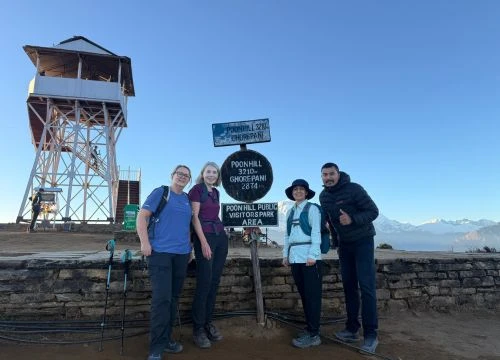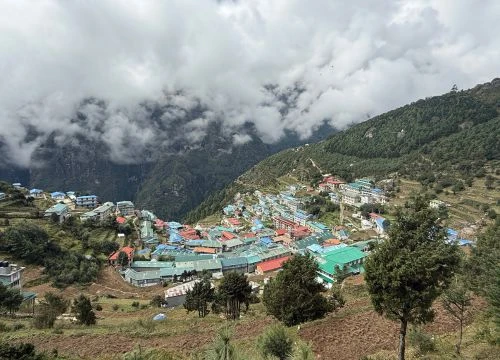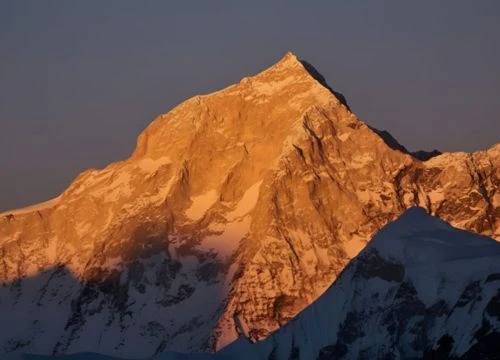Trek Overview: Quick Comparison
Essential Trek Statistics
Feature | Poon Hill Trek | Mardi Himal Trek |
Duration | 3-5 days | 5-9 days |
Distance | 32 km | 45 km |
Maximum Altitude | 3,210m (Poon Hill) | 4,500m (Mardi Himal Base Camp) |
Difficulty | Easy to Moderate | Moderate to Challenging |
Guide Required | Optional | Mandatory |
Best For | Beginners, Time-limited | Experienced, Wilderness lovers |
Duration, Distance, Maximum Altitude
Poon Hill Trek Characteristics
The poon hill trek and mardi comparison shows this is one of Nepal's shortest yet most rewarding adventures
Trek can be completed in just 3-5 days, perfect for travelers with limited time
Covers approximately 32 kilometers of well-established trails
Whereas the poon hill trek focuses on cultural villages, it maintains moderate difficulty
Mardi Himal Trek Features
This challenging trek spans 5-9 days through varied terrain
The mardi himal base camp trek covers roughly 45 kilometers of increasingly remote paths
Reaching mardi himal base camp at 4,500 meters demands proper acclimatisation
The 4 days Mardi himal trek option exists but requires excellent fitness levels
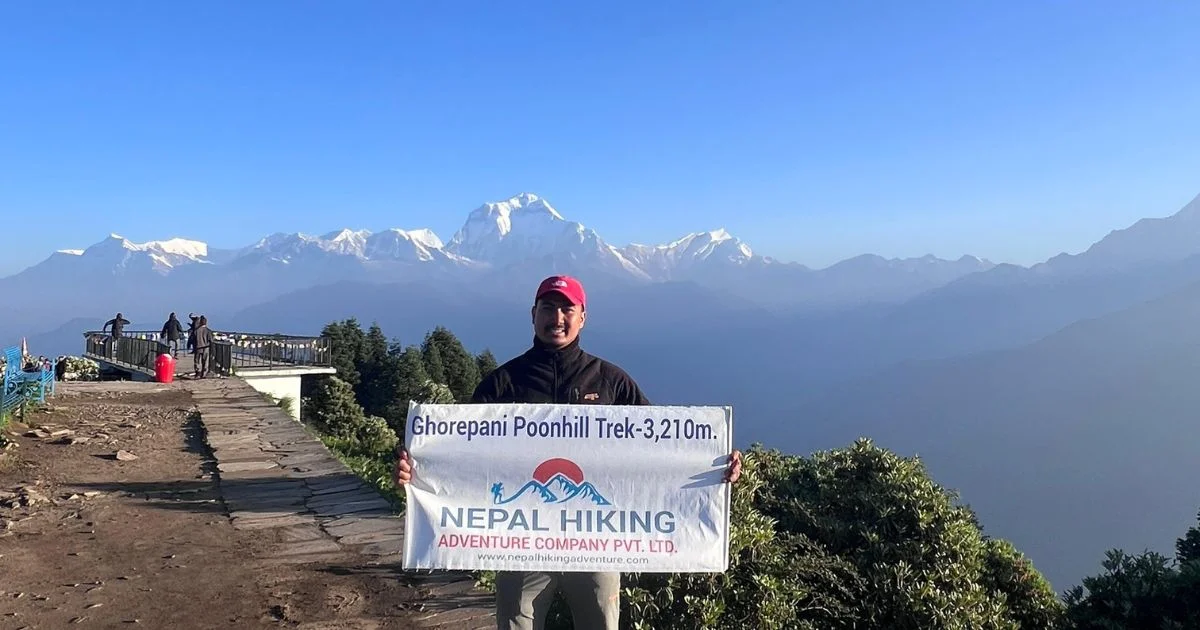
Difficulty Level & Fitness Requirements
Why Poon Hill Appeals to Beginners
Poon hill is famous for being one of the best introductory treks in Nepal, making it an easy trek for first-time visitors. The ghorepani poon hill trek follows stone-paved steps and established paths requiring moderate fitness levels with 5-7 hours of daily walking. Stone steps make navigation straightforward, even during challenging conditions, while this popular short and easy trek delivers authentic mountain experiences without technical demands.
Mardi Himal's Greater Demands
This remote trek in the annapurna region presents different challenges than the hill trek and mardi himal comparison might suggest. Hill and Mardi himal trek comparison shows steeper, more rugged terrain requiring better endurance and surefootedness as you approach High Camp. The trek is also suitable for determined beginners with proper preparation, though it demands more commitment than this popular short trekking option.
Real Trekker Experience: First-Timer Success Story
Sarah, a 28-year-old American with minimal hiking experience, joined our Poon Hill group in March 2023. Despite initial nervousness about fitness levels, she found the stone steps manageable with regular breaks. The sunrise from poon hill left her speechless, transforming her perspective on adventure travel. The social teahouse evenings, filled with laughter from fellow trekkers, gave her confidence to embrace future mountain challenges. Six months later, she returned to tackle Annapurna Base Camp.
Mountain Views & Photography Opportunities
Sunrise & Mountain View Highlights
Poon Hill's Famous Sunrise
The sunrise from the famous poon hill viewpoint delivers panoramic views of Dhaulagiri, Annapurna South, Machhapuchhre, and Manaslu ranges. Poon hill trek offers accommodation for numerous trekkers who gather before dawn. This culturally rich trek provides the classic Nepal sunrise photo opportunity. Comparing poon hill to other viewpoints, few match its wide-angle panorama. Poon hill and offers guaranteed mountain vistas regardless of weather conditions.
Mardi Himal's Intimate Encounters
Mardi Himal vs Poon Hill shows closer and more varied mountain perspectives throughout the journey. In particular, views from the Mardi Himal Base Camp provide dramatic proximity to Machhapuchhre's towering face. Moreover, photographers often prefer the diverse viewpoints throughout the trek. In addition, the Mardi Himal trek offers unique compositions impossible from single-location viewpoints. Finally, Mardi Himal presents constantly changing perspectives as you gain elevation through different terrain zones.
Insider Photography Tips from Our Guides
For Poon Hill, our experienced guides recommend arriving 30 minutes before dawn to secure prime viewpoint positions. Use a wide-angle lens (16-35mm) at f/8-f/11 for sharp panoramas, with ISO 400-800 settings for low-light conditions. For Mardi Himal, capture Machhapuchhre from High Camp during golden hour using a 50mm lens at f/5.6 for intimate mountain compositions. The trek takes photographers through varied lighting conditions, demanding flexible camera settings.
Trail Experience & Terrain Analysis
Route Differences & Starting Points
Aspect | Poon Hill Route | Mardi Himal Route |
Starting Point | Nayapul (both routes) | Nayapul (both routes) |
Key Villages | Tikhedhunga, Ulleri, Ghorepani | Dhampus, Forest Camp, Low Camp |
Trail Type | Stone steps, established paths | Natural terrain, ridge lines |
Navigation | Straightforward, well-marked | Requires attention, guide recommended |
Poon Hill Trail Characteristics
The trek begins from nayapul and poon hill trek route follows the classic Annapurna Circuit approach. Poon hill via Tikhedhunga and Ulleri villages offers cultural immersion. Well-maintained paths ensure clear signage and regular teahouse stops. Stone steps characterize much of the route, particularly from Tikhedhunga to Ulleri.
Mardi Himal Trail Features
The Mardi Himal trek route in the Annapurna region branches toward Dhampus and Forest Camp. From there, it follows ridge lines through pristine rhododendron forests. As you continue, the trail becomes increasingly narrow and steep above Forest Camp. Furthermore, weather conditions can dramatically affect trail visibility in the upper sections.
Case Study: Underestimating Mardi Himal's Challenge
In April 2024, a client from Germany arrived with minimal fitness preparation for Mardi Himal, expecting similar demands to other popular short treks. By Forest Camp, fatigue from steep ridges became apparent. Our guide adjusted the itinerary, adding an extra rest day at Low Camp with short acclimatisation walks. This flexible approach allowed the client to reach High Camp safely, though he chose to skip the Base Camp push to avoid overexertion. The experience taught us the importance of proper pre-trek fitness preparation.
Photography & Mountain Perspectives
Poon Hill Photography Advantages
Wide-angle panoramic opportunities from the famous viewpoint
Consistent results regardless of photography skill level
Classic Nepal trekking photo location
Accessible positioning for sunrise shots
Mardi Himal Photography Benefits
Varied and intimate mountain photography throughout the trek
Constantly changing perspectives of the Annapurna massif
Dramatic foreground-background compositions from High Camp
Fewer crowds allow time for careful shot composition
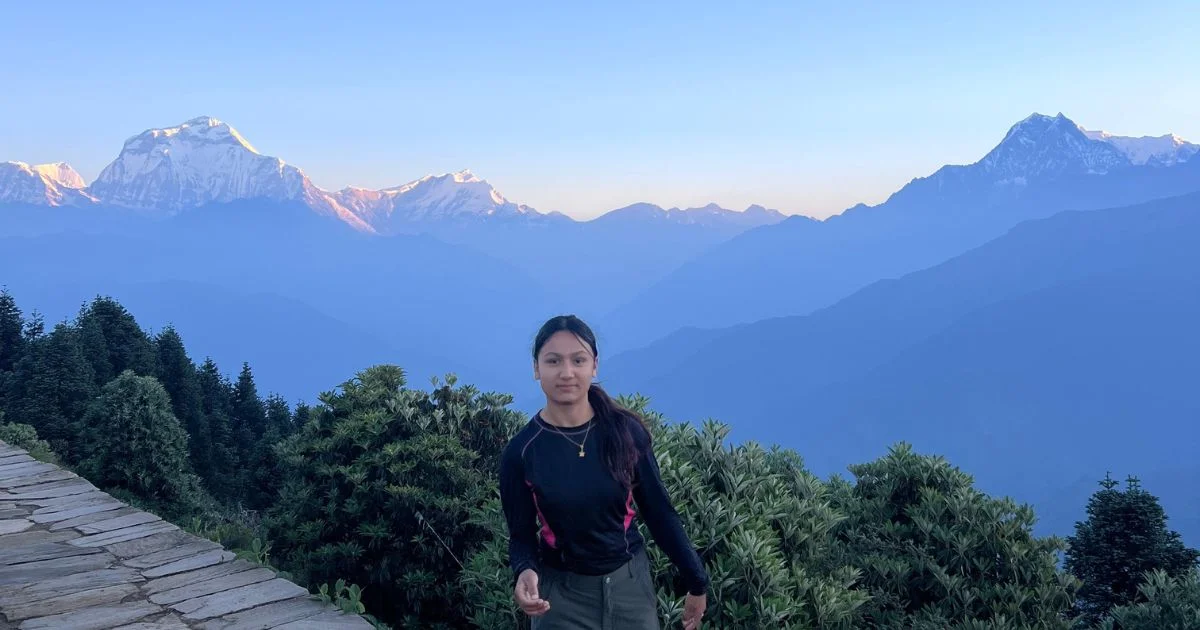
Crowds & Trekking Atmosphere
Poon Hill's Social Environment
One of Nepal's most popular trek destinations, this trek is less crowded than major circuits but busier than remote routes. Peak seasons (October-November, March-April) bring significant crowds. Social atmosphere provides opportunities to meet fellow adventurers. Well-supported infrastructure ensures comfortable experiences throughout this popular short trekking route.
Mardi Himal's Solitude
Unlike poon hill, Mardi offers significantly fewer crowds, especially beyond Forest Camp. The trek is shorter than major circuits but provides pristine wilderness areas with minimal human impact. More authentic mountain experiences require greater self-reliance. The trek is slightly more demanding physically but rewards trekkers with genuine solitude.
Authentic Cultural Encounter: Gurung Elder's Stories
During a March 2023 Poon Hill trek, our group shared tea with an elderly Gurung man in Ghorepani who recounted stories of the trail's history as an ancient trading route. His eyes gleamed with pride as he described how his grandfather's generation used these same paths for salt and grain transport from Tibet. Such moments, impossible to find in guidebooks, remind us why the trek and poon hill trek combination remains culturally significant beyond its natural beauty.
Accommodation & Cultural Experiences
Teahouse Quality Comparison
Feature | Poon Hill Teahouses | Mardi Himal Lodges |
Service Level | Well-established, standardized | Family-run, personalised |
Menu Variety | Diverse, competitive pricing | Basic, higher altitude costs |
Amenities | Comfortable beds, social areas | Rustic, authentic atmosphere |
Availability | Consistent throughout route | Limited at higher elevations |
Cultural Immersion Opportunities
Poon Hill's Cultural Richness
The trek and Mardi himal trek both pass through traditional villages, but poon hill trek offers more established cultural encounters. Ghorepani and surrounding villages maintain traditional architecture. Local festivals and daily village life provide authentic cultural glimpses. Interactions with Gurung and Magar communities throughout the trek create lasting memories.
Mardi Himal's Authentic Encounters
The Mardi trek provides different cultural experiences focused on high-altitude communities. In these less touristy areas, locals maintain traditional lifestyles and offer genuine interactions. Moreover, authentic animal husbandry and high-altitude farming observations provide valuable cultural insights. Overall, more genuine and less commercialised cultural interactions distinguish this route from busier alternatives.
Hidden Gem Recommendations from Local Guides
On Poon Hill, most trekkers skip the short detour near Tadapani to a quiet ridge offering unobstructed Annapurna South views. However, our local guide, Ram, whose family has guided these trails for three generations, shares this secret spot with clients seeking solitude. In contrast, for Mardi Himal, a lesser-known clearing below Low Camp provides a unique angle on Machhapuchhre's fishtail shape, which is often missed by groups rushing to High Camp.
Logistics & Planning Considerations
Access & Transportation
Both treks begin with straightforward logistics from Pokhara:
Short drive from pokhara to Nayapul (1.5 hours) for both routes
Transportation options include private vehicles, shared jeeps, or local buses
Road access remains consistent year-round with occasional monsoon delays
Early morning departures allow mid-morning trek commencement
Permits & Regulations
Required Documentation
Guide Requirements
Poon Hill: Optional (solo trekking permitted)
Mardi Himal: Mandatory for foreign trekkers
Daily guide costs: $30-50 USD
Cost Analysis & Budget Planning
Comprehensive Cost Breakdown
Expense Category | Poon Hill Trek | Mardi Himal Trek |
Permits | $50 | $50 |
Transport | $80 | $80 |
Guide | $150-250(3-5 Days) | $150-210 (6-7 days) |
Accommodation | $50-100 | $100-150 |
Meals | $60-100 | $180-250 |
Total Range | $310-500 | $450-700 |
Budget Considerations
Poon Hill Cost Factors
Lower overall expenses due to established infrastructure
Competitive meal pricing from higher volume tourism
Optional guide reduces mandatory costs
Shorter duration limits total expenditure
Private or Local Transpotations
Mardi Himal Investment
Higher costs reflect remote nature and specialised logistics
Mandatory guide requirements increase budget significantly
Meals become expensive at higher altitudes due to supply challenges
Many consider extra cost worthwhile for wilderness experience
Seasonal Planning & Weather Considerations
Best Trekking Seasons
Optimal Timing for Both Routes
Spring (March-May): Rhododendron blooms, comfortable temperatures
Autumn (September-November): Clearest skies, most reliable weather
Winter: Possible but significantly colder, especially at Mardi's higher elevations
Monsoon (June-August): Challenging due to muddy conditions and limited visibility
Seasonal Highlights
Spring Advantages
Both mardi and poon hill transform into natural gardens during spring months. Rhododendron forests create spectacular color displays throughout both routes. The mardi trek passes through particularly dense rhododendron stands at middle elevations. March-April timing rewards trekkers with exceptional floral photography opportunities. Mardi trek are spring months particularly stunning for botanical enthusiasts.
Autumn Benefits
Peak season offers clearest mountain visibility across both routes. Most reliable weather patterns provide optimal trekking conditions. Higher accommodation costs but exceptional mountain views justify the premium. Post-monsoon freshness enhances air quality and photographic clarity.
Weather Pattern Insights from 15+ Years of Guiding
Poon Hill maintains a slight advantage for clear skies during shoulder seasons (late February, early December) due to its lower maximum altitude, which experiences less high-altitude cloud formation. Mardi Himal's higher elevations prove more susceptible to fog during early spring or late autumn, though both routes can provide crystal-clear mountain views with favorable conditions.
Nature & Wildlife Encounters
Biodiversity Highlights
Mardi Himal Wildlife Opportunities
Exceptional viewing in pristine forest environments
Common sightings include colorful birds, mountain goats
Occasionally elusive leopards in lower elevation forests
Varied elevation zones support diverse ecosystems
Flora Diversity Across Routes
Lower elevations feature subtropical vegetation including orchids and ferns. Middle elevations dominated by rhododendron forests provide spectacular spring displays. Alpine vegetation above treeline demonstrates nature's mountain adaptations. Himal and poon hill offer different botanical experiences based on elevation zones and seasonal timing.
Wildlife Sighting Story: Unexpected Langur Encounter
During a 2023 Mardi Himal trek, our group encountered a family of langur monkeys near Forest Camp, an increasingly rare sighting due to habitat changes. These playful primates spent nearly an hour observing our group with curious expressions, providing extraordinary photography opportunities. Our local porter, Lakpa from Dhampus village, explained how his childhood included frequent monkey sightings, highlighting the environmental changes affecting local wildlife patterns.
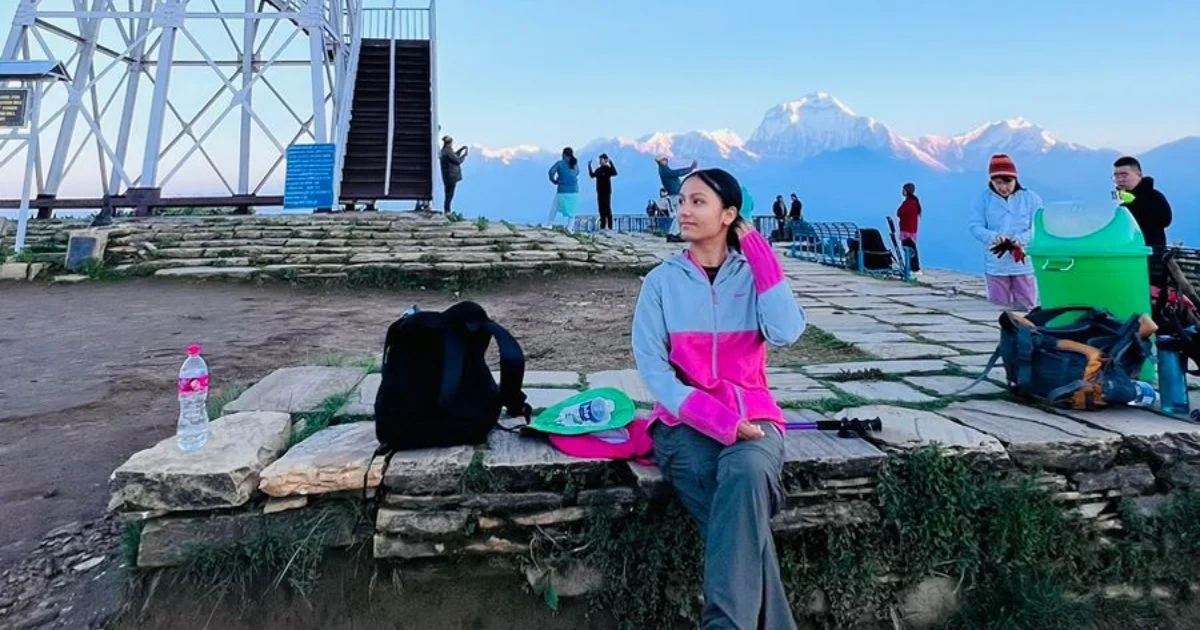
Suggested Itinerary Options
Classic 5-Day Poon Hill Route
Day-by-Day Breakdown
Day 1: Drive Pokhara to Nayapul (trek starting point), trek to Tikhedhunga (2-3 hours walking)
Day 2: Tikhedhunga to Ghorepani via Ulleri's famous stone steps (5-6 hours)
Day 3: Pre-dawn Poon Hill sunrise viewpoint visit, descend to Tadapani (6-7 hours)
Day 4: Tadapani through Ghandruk village, continue to Nayapul (6-7 hours)
Day 5: Return drive to Pokhara
This 5 days Poon hill trek itinerary is one of the most efficiently designed best short treks, allowing adequate acclimatisation while maintaining reasonable daily distances.
Extended 9-Day Mardi Himal Route
Comprehensive Itinerary
Day 1: Arrive in Kathmandu (1,324 m / 4,344 ft)
Day 2: Fly or drive from Kathmandu to Pokhara
Day 3: Drive to Kande and trek to Pitam Deurali (2,125 m / 6,972 ft)
Day 4: Trek from Pitam Deurali to Low Camp (3,050 m / 10,007 ft)
Day 5: Trek from Low Camp to High Camp (3,600 m / 11,810 ft)
Day 6: Hike to Mardi Himal Base Camp (4,500 m / 14,764 ft), then descend to Badal Danda and Siding (1,700 m / 5,577 ft)
Day 7: Drive back to Pokhara (822 m / 2,697 ft)
Day 8: Drive to Kathmandu (1,324 m / 4,344 ft)
Day 9: Final departure
This extended 9 days Mardi Himla trek itinerary allows for better acclimatisation, includes a rest day for recovery, and provides more time to appreciate the diverse landscapes from subtropical forests to alpine meadows. The additional days reduce the physical demands while maximising the cultural experience through authentic Gurung and Magar villages.
Combined Adventure Option
Ambitious trekkers can create a comprehensive Poon Hill Mardi Himal Trek spanning 14 days, linking both destinations for maximum variety. This option demands excellent fitness and a substantial time commitment. Custom routes maximise cultural encounters and viewpoints, while professional guide support remains essential for the best experience. No matter which trek segment you prioritise, the combined route delivers exceptional variety.
Back-to-Back Trek Experience: German Couple's Perspective
A German couple completed both mardi himal and ghorepani poon hill treks in a 12-day itinerary during October 2023. They appreciated Poon Hill's lively teahouse atmosphere and iconic sunrise but found Mardi Himal's quiet trails and close-up Machhapuchhre views more spiritually rewarding. They described Poon Hill as a "classic postcard" experience, while the trek to mardi felt like "discovering a hidden gem." The couple valued Poon Hill's accessibility but found Mardi's challenge made the mountain views more emotionally satisfying.
Expert Acclimatisation Strategies
Altitude Management Differences
Poon Hill Acclimatisation
Poon Hill's maximum altitude (3,210m) requires minimal acclimatisation planning, with gradual ascent over 2-3 days providing adequate adjustment time. We ensure proper rest in Ghorepani before the sunrise climb to prevent altitude-related discomfort.
Mardi Himal Altitude Protocol
To complete the Mardi Himal trek safely, reaching 4,500m at Base Camp demands careful pacing and systematic acclimatisation. The trek follows shorter daily stages, including a camp at Low Camp (2,970 m) and a gradual ascent to High Camp (3,550 m), giving the body time to adjust and reducing altitude risks. In comparison, Himal and Ghorepani Poon Hill present dramatically different altitude challenges, thus requiring distinct preparation approaches.
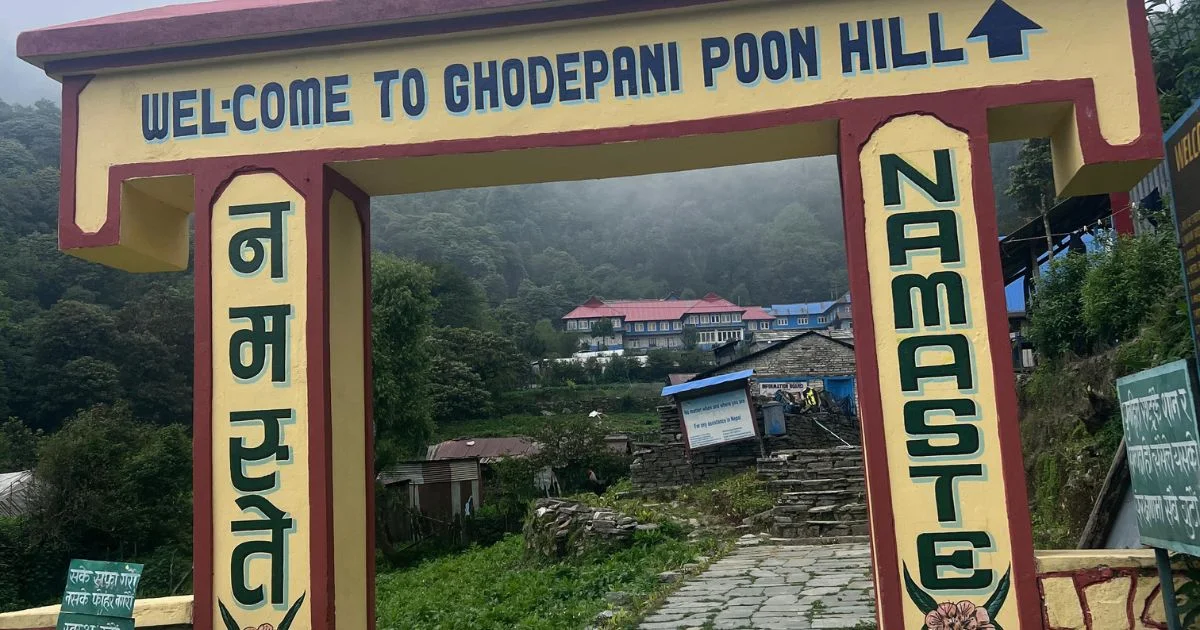
Logistical Efficiency Tips
For Poon Hill, start sunrise hikes at 4:30 AM to secure prime viewpoint positions and avoid crowds. For Mardi Himal, begin daily treks by 7 AM to circumvent afternoon fog above Forest Camp and ensure lodge availability at High Camp. Pre-booking accommodations in Ghorepani during peak seasons prevents overcrowding disappointments.
Decision-Making Framework
Quick Selection Guide
Choose Poon Hill Trek If
Limited time available (3-5 days maximum)
Prefer established infrastructure and reliable services
Want guaranteed sunrise views with minimal risk
First-time Nepal visitor seeking classic Himalayan experience
Budget-conscious travel priorities
The trek is the one that perfectly balances accessibility with authentic mountain experiences
Choose Mardi Himal Trek If
Can commit to longer duration (5-7 days)
Prioritise wilderness experience over convenience
Enjoy photography variety throughout the journey
Comfortable with mandatory guide requirements
Seeking authentic adventure away from tourist crowds
The trek takes you into pristine wilderness areas with intimate mountain encounters
Safety & Preparation Guidelines
Universal Preparation Requirements
Adequate fitness levels for both routes
Appropriate trekking gear regardless of choice
Realistic timeline expectations and flexibility
Emergency preparedness for rapid weather changes
Altitude-Specific Considerations
Poon Hill vs Mardi himal trek comparison shows significant elevation differences requiring different preparation approaches. Higher mardi himal base camp elevations demand better acclimatisation planning. Professional guide support provides valuable safety margins. Extra acclimatisation days recommended for Mardi route. The trek is longer and demands more comprehensive preparation than Poon Hill. The Mardi himal trek and poon hill have different technical requirements in upper sections.
Real Client Testimonial: Choosing the Right Trek
"As a first-time trekker with only five days available, I initially considered Mardi Himal for its wilderness appeal. Our Nepal Everest Base Camp Co. consultant recommended Poon Hill instead, explaining how the hill trek provides excellent mountain views within my timeframe. The sunrise experience exceeded expectations, and the cultural encounters in Ghandruk village created lasting memories. Next year, I'm returning for Mardi Himal with proper time allocation." - Jennifer M., Canada, October 2023
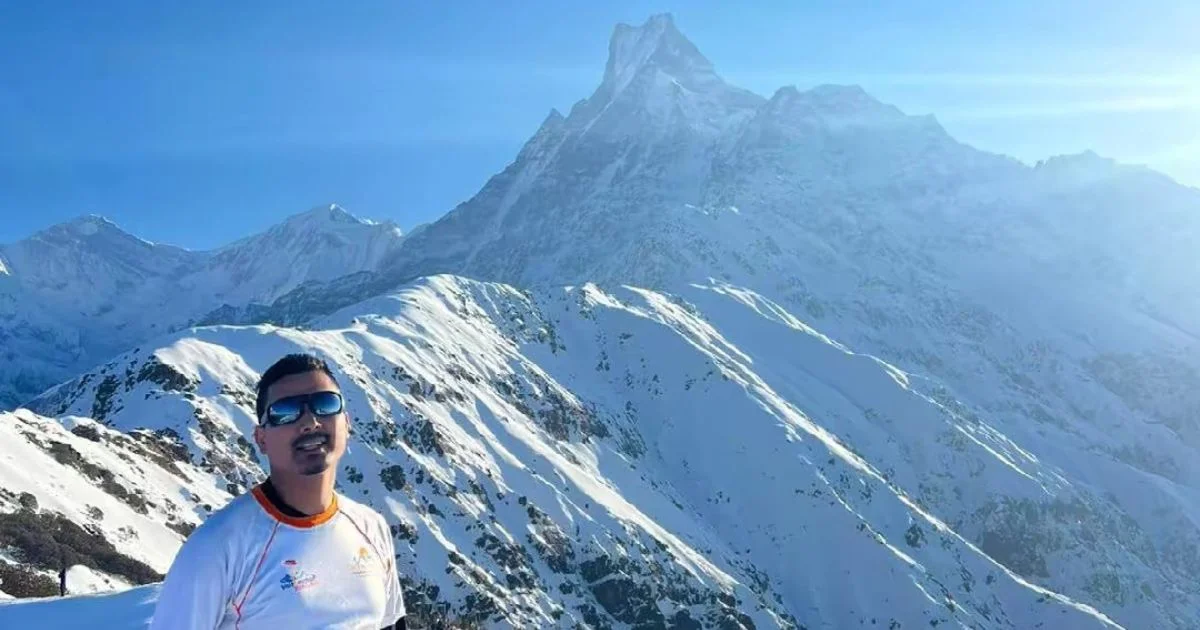
Making Your Final Decision: Poon Hill Trek vs Mardi Himal Trek
Poon Hill Trek vs Mardi Himal Trek are two of Nepal’s most rewarding adventures, each offering unique experiences for different kinds of trekkers. The Poon Hill trek is famous for its accessibility, reliable infrastructure, and classic sunrise panorama that has captivated trekkers for decades. In contrast, Mardi Himal is better suited for those seeking solitude, wilderness encounters, and intimate proximity to towering Himalayan peaks.
Ultimately, your choice depends on available time, desired challenge level, and personal adventure philosophy. For instance, beginners or time-constrained travelers will find the Poon Hill trek is short yet incredibly rewarding, delivering iconic mountain experiences in just 3-4 days. On the other hand, experienced trekkers or those seeking authentic wilderness encounters will appreciate the Mardi Himal trek's remote character and varied photographic opportunities throughout the longer journey.
Regardless of your selection, both routes showcase Nepal's extraordinary natural beauty and warm hospitality in unforgettable ways. Furthermore, the Annapurna region continues to reward adventurous spirits with life-changing mountain experiences, whether you choose the established charm of Poon Hill or the pristine wilderness of Mardi Himal. Therefore, Nepal Everest Base Camp Trekking Co. can help you plan your perfect Himalayan adventure with expert guidance and local knowledge. Plan carefully, trek responsibly, and prepare for memories that will inspire future mountain adventures. Contact us to begin your Nepal trekking journey today.
FAQs - Poon Hill Trek vs Mardi Himal Trek
Which is better: Poon Hill Trek vs Mardi Himal Trek for beginners?
Poon Hill trek stands out as the more accessible choice for beginners, requiring only 3-4 days with moderate fitness levels. The well-maintained stone steps and established teahouse trail make navigation straightforward for first-time trekkers. This classic Poon Hill trek offers reliable mountain experiences without technical challenges, while Mardi Himal demands higher fitness and presents steeper terrain through rhododendron forests.
Do I need a guide for Poon Hill or Mardi Himal?
Guide requirements differ significantly between these two treks. Poon Hill allows independent trekking, though many choose local guides for cultural insights and navigation support. Mardi Himal mandates professional guides under current Nepal trekking regulations due to its remote base camp location and challenging high-altitude sections that require safety expertise.
Which trek offers better sunrise and mountain views?
Poon Hill delivers the iconic sunrise viewpoint experience, with sweeping panoramas of Annapurna South, Machapuchare (Fishtail), and Dhaulagiri peaks from its famous 3,210-meter summit. In contrast, Mardi Himal provides more intimate mountain encounters throughout the journey, offering closer perspectives of Machapuchare Base Camp and varied alpine scenery as you traverse different elevation zones.
Can I combine Poon Hill and Mardi Himal?
These treks connect beautifully in a comprehensive 10-14 day adventure circuit. The combined route typically starts from Pokhara, covers both destinations, and returns via the same gateway city. This extended itinerary requires excellent physical conditioning and ample vacation time but rewards trekkers with exceptional diversity across the Annapurna Conservation Area.
What is the average cost for each trek?
Budget considerations favor Poon Hill for cost-conscious travelers, with total expenses ranging $300-500 for independent trekkers using teahouse accommodations. Mardi Himal costs $450-700 due to mandatory guide fees, longer duration, and higher-altitude camping requirements. Both prices include permits, accommodation, meals, and basic trekking expenses but exclude international flights to Kathmandu.







